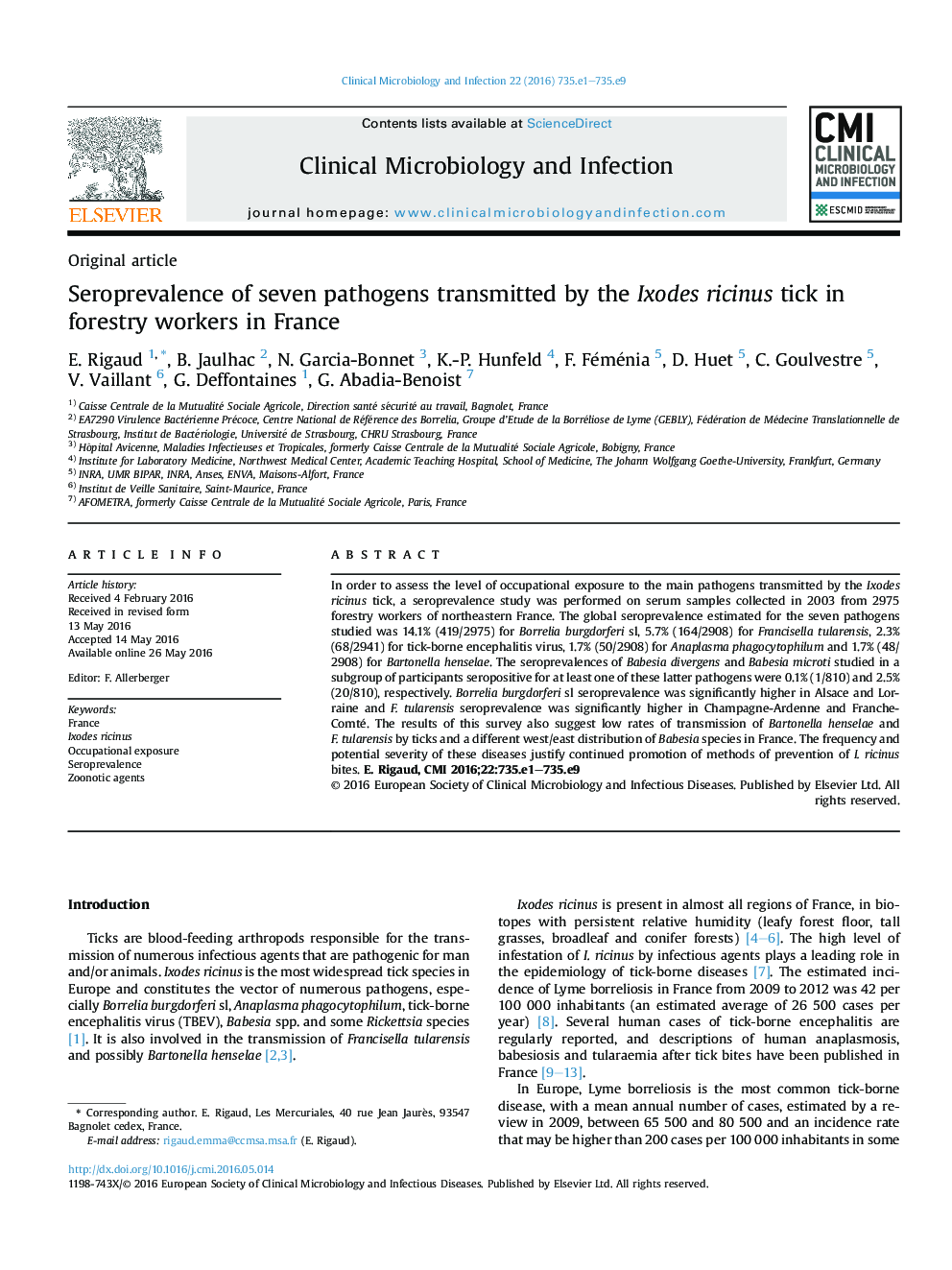| Article ID | Journal | Published Year | Pages | File Type |
|---|---|---|---|---|
| 5671647 | Clinical Microbiology and Infection | 2016 | 9 Pages |
In order to assess the level of occupational exposure to the main pathogens transmitted by the Ixodes ricinus tick, a seroprevalence study was performed on serum samples collected in 2003 from 2975 forestry workers of northeastern France. The global seroprevalence estimated for the seven pathogens studied was 14.1% (419/2975) for Borrelia burgdorferi sl, 5.7% (164/2908) for Francisella tularensis, 2.3% (68/2941) for tick-borne encephalitis virus, 1.7% (50/2908) for Anaplasma phagocytophilum and 1.7% (48/2908) for Bartonella henselae. The seroprevalences of Babesia divergens and Babesia microti studied in a subgroup of participants seropositive for at least one of these latter pathogens were 0.1% (1/810) and 2.5% (20/810), respectively. Borrelia burgdorferi sl seroprevalence was significantly higher in Alsace and Lorraine and F. tularensis seroprevalence was significantly higher in Champagne-Ardenne and Franche-Comté. The results of this survey also suggest low rates of transmission of Bartonella henselae and F. tularensis by ticks and a different west/east distribution of Babesia species in France. The frequency and potential severity of these diseases justify continued promotion of methods of prevention of I. ricinus bites.
